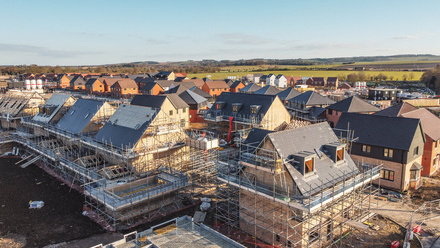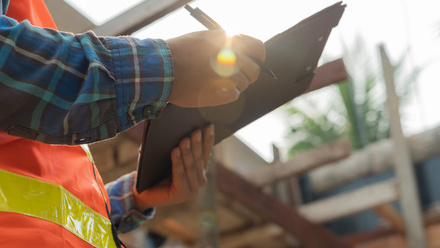The Construction (Design and Management) Regulations (CDM 2015) govern the way construction projects of all sizes and types are planned, covering the management of health, safety and welfare.
Getting to grips with all the rules and regulations can be a minefield, so we spoke to the Health and Safety Executive (HSE) and asked some of the most common questions about CDM 2015 and working with domestic clients.
Q1. If I am working for a domestic client, when do I take on the client’s duties set out in Regulations 4 and 6 of CDM 2015?
A. If you are the only contractor working on the job you will be responsible for managing the project safely and, if it meets the notification threshold, for notifying the project to HSE.
If more than one contractor is working on the project, the contractor ‘in control’ of the project (the main contractor) will become the principal contractor. The principal contractor will also take on the client’s duties.
There may be times when a domestic client has agreed (in writing) with the principal designer (their architect or other designer) that the coordination and management of the project, and the client’s duties, will be taken on by the principal designer. If no such agreement has been made, the principal contractor automatically takes on project management responsibilities, including the client’s duties.
Q2. If I am the only contractor or the principal contractor working on a job for a domestic client, do I have to take on the client’s duties in Regulations 4 and 6 of CDM 2015?
A. Yes. The law automatically transfers the client duties to the contractor or principal contractor, unless there is an architect or other designer involved with the job who has taken on the principal designer role and has agreed with the domestic client (in writing) to take on the client duties.
Q3. If I am the main contractor working on a job for a domestic client and there are going to be other contractors also working on the project, do I have to become the principal contractor?
A. Yes. The law automatically makes the contractor ‘in control’ of the construction phase the principal contractor.
Q4. If I am the principal contractor working on a job for a domestic client, do I have to take on the client’s duties?
A. Yes. The law automatically transfers the client duties to the principal contractor. However, there may be times when a domestic client has agreed (in writing) with the principal designer (their architect or other designer) that the coordination and management of the project, and the client’s duties, will be taken on by the principal designer. If no such agreement has been made, the principal contractor automatically takes on project management responsibilities, including the client’s duties.
Q5. What will I need to do to comply with the client duties automatically transferred to me from a domestic client?
A. If you are managing the health and safety risks of the job as a contractor or principal contractor you will probably be complying with the client duties.
You should also ask the domestic client for any available relevant information which will help you to manage the work safely, such as the presence of asbestos containing materials, and the location of gas and electrical services.
You will also need to notify the project to HSE if it meets the notification threshold.
Q6. Will this make any difference to the way the project is run?
A. If you are a competent contractor or principal contractor, and you:
- have sensible arrangements for managing the project from the start;
- select the right contractors with the skills, knowledge and experience for the work (remember: the right people for the right job);
- set out the sequencing of the project;
- ensure contractors are coordinated regarding time and task to prevent dangerous situations arising;
- make relevant information available to those who need it when they need it (remember: the right information to the right people at the right time);
Then you will probably be doing what the law requires of you already.






